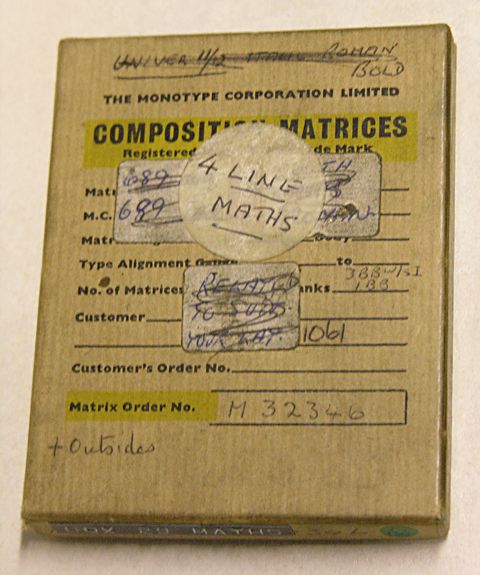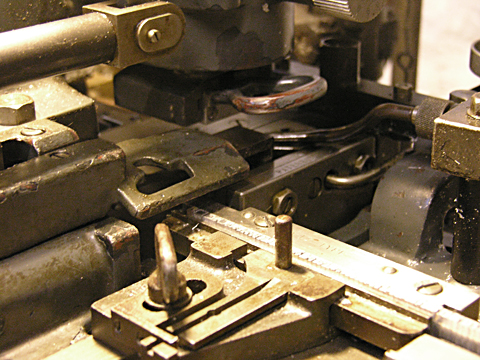
We’re finally getting feedback on the essays we completed back in January, drawing a long period of uncertainty to a conclusion. I haven’t done any kind of academic writing in quite a long time, and considering the rather modest expectations placed on writing for people in art programs in the States, it might be said that I’ve never done any serious academic writing.
It was hard just to choose a topic for the essay. It was suggested that it should be no less an effort than a dissertation, just restricted to about 4,000 words. that’s more than I’ve written at one time before, but still short enough to demand a pretty tight focus for a topic. I finally settled on an overview of Monotype’s 4-line system for setting math in hot metal, a technique they introduced back in the 50s to try and automate the setting of math a bit more than had been possible before. I knew I wanted to do something about math so I could make a little headway on my dissertation topic, and the more I read back in the Fall the more it seemed that everything happening in the early and mid 20th century came down to Monotype. I had a hunch that whatever Monotype made available had a huge effect on how people expected math to look ever since, so I wanted to see what their type for math was all about.
I started worrying that it would be hard to write enough, but after a lot of research at St. Bride, in Spur H, and in Special Collections, and a couple of invaluable demos of hot-metal equipment (first by David Bolton at the Alembic Press, and then by Mick Stocks here in the department) I began to realize that I easily had enough for a full dissertation and would have to struggle to present it concisely enough for the essay. I would have to explain the basics of hot-metal composition clearly enough to make it clear what was different about the 4-line method, and I would also have to analyze the new version of Times New Roman that was introduced to work with 4-line math. The topic was basically a history, and it was a struggle to find something original to say. It would have been easy enough to make suppositions, but it was a lot herder to arrange the facts in a way that set up a final conclusion.
In the end it turned out well. I certainly wasn’t convinced of that, but Gerry’s feedback started out with: “This was a real pleasure.” He thought there were a couple of details that could have used elaboration (more illustration of how character widths were controlled in the caster, more primary-source reactions from customers who used the 4-line system) but on the whole he though I did a good job of presenting the facts, and he liked that I went beyond just the technical details and concluded some things about the business decisions at play and why Monotype went for an evolutionary solution rather than a revolutionary one. He also said that he was very curious about some ideas I threw in at the end about how digital typesetting took off in other directions, and that’s good, since that’s basically what my dissertation will be all about. “Publishable” was probably the best word that came up during the feedback, which was gratifying.
The whole thing can be read here, if you’re nerdy enough to be curious.



